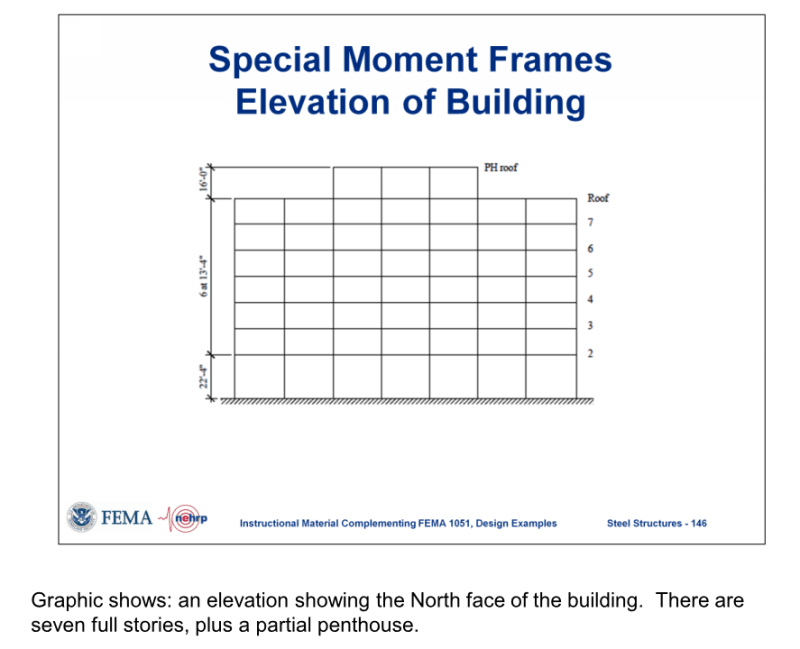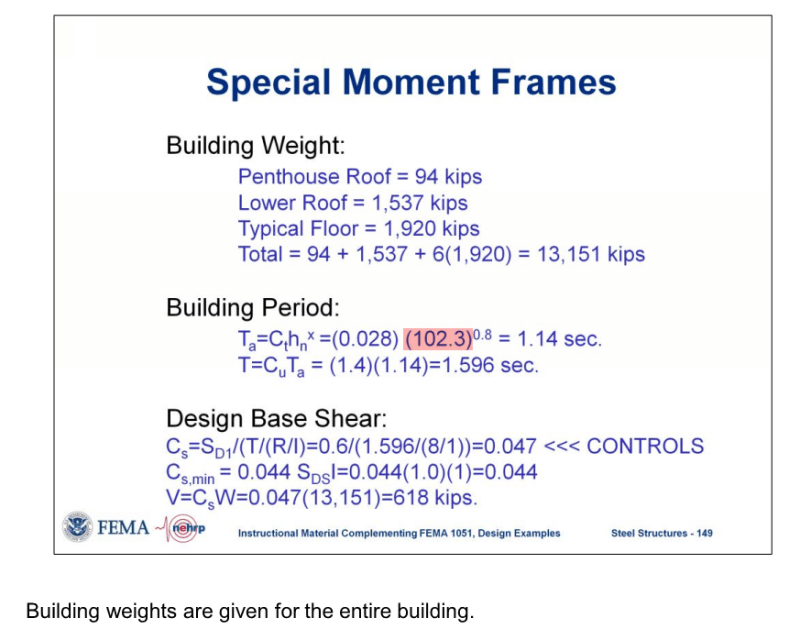sticksandtriangles
Structural
I have a (4) story building with a sizeable and tall "penthouse" on top.
The main building lateral system is special steel moment frames and the penthouse lateral system is braced frames designed through ASCE 7, chapter 13, Fp forces.
What do I take as my structure height? The roof elevation or the penthouse elevation?
If I run ELF with the roof elevation as my structure height, I get an increase in base shear of about 30% as compared to the penthouse being the height (due to increase in approximate period calculation, T).
I am of the opinion that the roof should be taken as the height of the structure and not the penthouse. My colleagues believe it to be the penthouse.
Can anyone point to something in ASCE 7 that is definitive. Paraphrasing ASCE 7, it defines structure height as the tallest portion of the lateral force resisting system; which is a little vague in my opinion.
Thanks!
S&T
The main building lateral system is special steel moment frames and the penthouse lateral system is braced frames designed through ASCE 7, chapter 13, Fp forces.
What do I take as my structure height? The roof elevation or the penthouse elevation?
If I run ELF with the roof elevation as my structure height, I get an increase in base shear of about 30% as compared to the penthouse being the height (due to increase in approximate period calculation, T).
I am of the opinion that the roof should be taken as the height of the structure and not the penthouse. My colleagues believe it to be the penthouse.
Can anyone point to something in ASCE 7 that is definitive. Paraphrasing ASCE 7, it defines structure height as the tallest portion of the lateral force resisting system; which is a little vague in my opinion.
Thanks!
S&T


